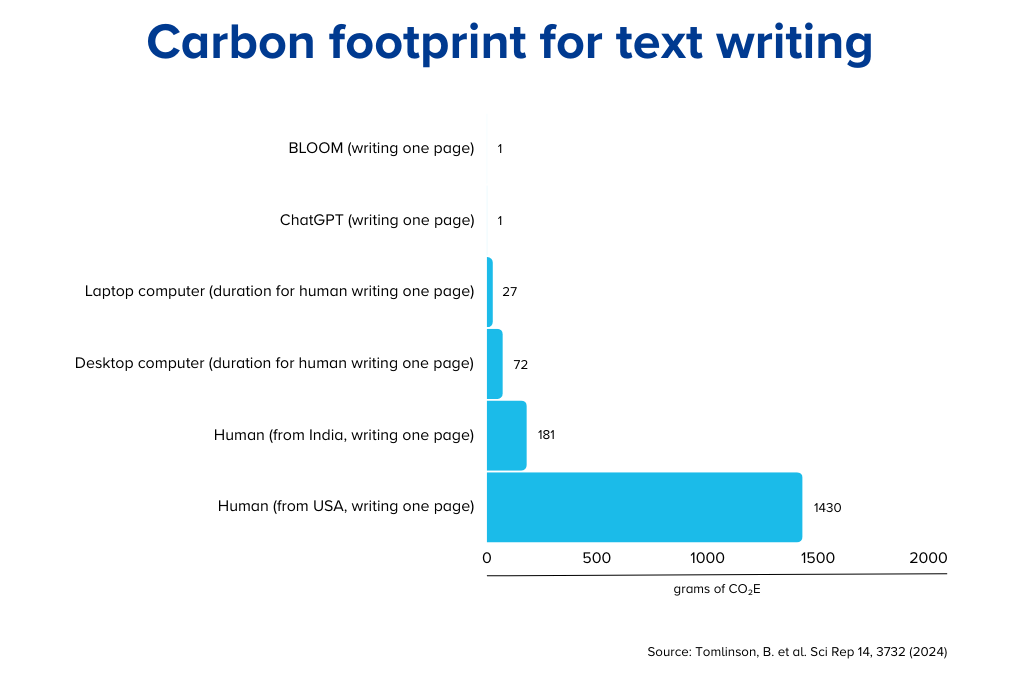Artificial intelligence: A real opportunity for climate action?
February 3, 2025
We read new reports and articles about artificial intelligence (AI) almost every day, as seen most recently with DeepSeek. Sometimes it is touted as a panacea, other times as the greatest danger. Occasionally, the steady advance of digitalisation even prompts well-known companies to use nuclear power plants again to satisfy their hunger for data. This article clarifies how AI can be used sensibly, how to counter risks, and how to assess the emissions that arise from using AI. Artificial intelligence and climate dataArtificial intelligence and machine learning (ML) now undoubtedly play a decisive role in the transformation of companies and their approaches to sustainability. ML is an area of artificial intelligence that helps computers learn from data and recognise patterns without needing precise programming. Using specialised analytical and statistical methods, ML models can learn to make predictions and decisions using large amounts of data, even when confronted with new, unknown data. These technologies are used in numerous applications, from image and speech recognition to the analysis of climate data. AI and ML are often used interchangeably, including in this text, for the sake of simplicity. Emissions accounting and plausibility checkClimatePartner is already using AI in emissions accounting. For instance, AI is used to assign suitable emission factors to materials or to calculate custom emission factors. Even for unknown product categories, validated assumptions can be made using AI, increasing the accuracy of the emissions calculations. This is particularly important for companies looking to develop climate action strategies, reduce their emissions, and document them transparently. All these current and future application scenarios require a large database to train the corresponding models and apply them effectively. ClimatePartner not only has extensive industry-specific expertise but has also built an enormous base of high-quality emissions data over the last twenty years. This data forms the basis for balancing scope 3 emissions in particular—i.e., emissions from the supply chain for which a company may lack precise information. Traceability is crucial here, even when AI is used. Only in this way can companies comply with the necessary auditing obligations as part of reporting. The results of an automated calculation of emissions for a material, process, or product must be verifiable with corresponding sources, such as the emission factor used. In addition to supporting the calculation of carbon footprints, ClimatePartner also relies on AI for knowledge management. With language models, the expertise accumulated over decades can be made available to all employees through a simple chat interface. This is particularly advantageous for training new employees and processing complex or very specific customer enquiries. Emissions from using artificial intelligenceAs a climate action company, one point is particularly important regarding the use of AI: the emissions generated by the use and training of these applications. These emissions come primarily from the energy consumption for these processes and can sometimes be high. Studies show that the greenhouse gas emissions of certain activities can be significantly lower for AI applications compared to human activities. For example, analyses reveal that AI systems generate between 130 and 2,900 times less CO2e per unit than humans when performing tasks such as writing and illustrating. However, training GPT-3 (the model on which ChatGPT was based when it was published) generated emissions comparable to the lifecycle emissions of five cars.
Different models are computationally intensive in different ways. Depending on the use case of the model, the required amount of training data and cycles, the hardware used, and the quality and efficiency of the algorithm used, AI models differ considerably in terms of energy consumption. Climate action through artificial intelligenceClimatePartner can assist in the assessment of AI-related emissions through reduction advice. This can be done by providing data and analysis that enables companies to assess and optimise the emissions of their AI usage. In doing so, ClimatePartner can draw on the collective experience of its industry experts and years of emissions data collection, including data on software applications. The use of AI offers numerous advantages. At the same time, it is important to consider the emissions generated by its usage and develop strategies that minimise them. By combining AI and the development of sound climate action strategies, ClimatePartner helps companies achieve their climate targets more effectively and reduce their environmental impact at the same time. |
